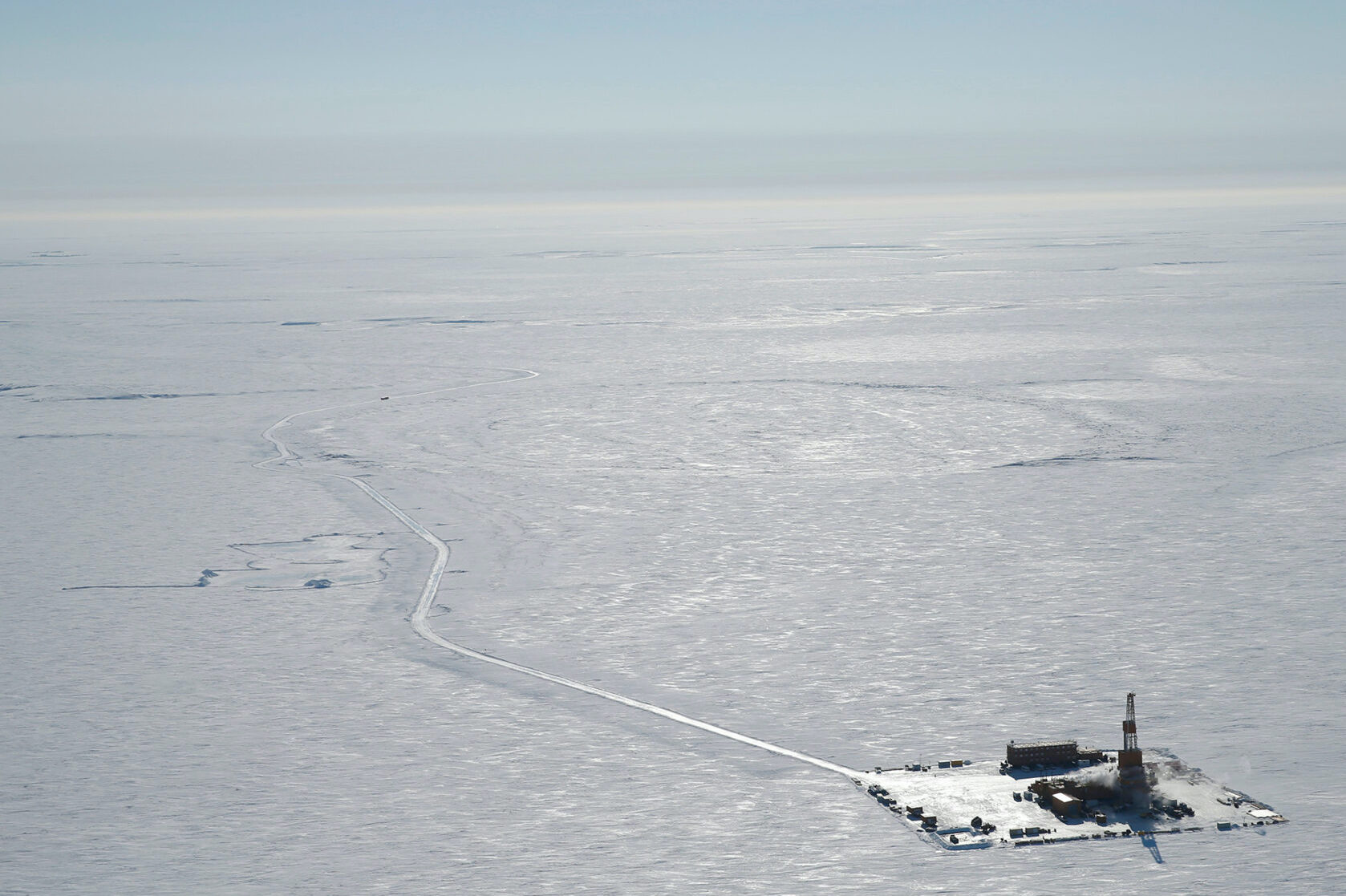
- Details
- By Brian Edwards
The Biden administration yesterday approved an $8 billion drilling project on Alaska’s oil-rich North Slope that has been vehemently opposed by environmentalists and some Native communities.
In approving the ConocoPhillips Willow oil project, the administration is greenlighting an enterprise that is expected to produce nearly 600 million barrels of petroleum over the next 30 years — enough to release 9.2 million metric tons carbon pollution each year, according to federal government estimates. The project has been called a “carbon bomb” by opponents.
The decision by the Bureau of Land Management came just one day after the Biden administration said it would bar or limit drilling in other areas of Alaska and the Arctic Ocean.
Environmentalists and some Alaska Native villages were outraged by the Biden administration’s decision to allow the project to move forward.
“Biden approved [Willow] knowing full well that it'll cause massive and irreversible destruction, which is just appalling, particularly coming from an administration who has pledged to address the climate crisis, has pledged to address environmental injustice, has pledged to address the extinction crisis,” said Kristen Monsell, a senior attorney at the Center for Biological Diversity, said in a statement.
In a statement, Sovereign Inupiat Living Arctic (SILA) called the decision a “great disappointment” that comes after years of grassroots, Inupiaq-led opposition, especially from the Nuiqsut Alaska Native Village, which SILA said will be most impacted by the project.
“The Bureau of Land Management acknowledges in the Record of Decision that if approved, [Willow] will have a disproportionate adverse effect on Nuiqsut’s health, subsistence and sociocultural systems,” SILA said in a statement. “We condemn the continued prioritization of profit over climate and people … We mourn the implications of worsening climate change within the Arctic and worldwide. We mourn for our animal relatives who cannot speak or ask for protection, for the water that will be forever polluted, and especially for those who have been taken from us by the cancer caused by these extractive industries.”
But the decision to approve the Willow project drew praise from Alaska’s bipartisan Congressional delegation and other Alaska Native communities who advocated for the project as a needed source of jobs in the region.
“We finally did it, Willow is finally reapproved, and we can almost literally feel Alaska’s future brightening because of it,” Republican Senator Lisa Murkowski said in a statement. “After years of relentless advocacy, we are now on the cusp of creating thousands of new jobs, generating billions of dollars in new revenues, improving quality of life on the North Slope and across our state.”
Democrat Mary Peltola (Yupik), Alaska’s lone member in the House of Representatives, hailed the decision and encouraged Alaskans “to make the best of this opportunity—that we use the revenues and jobs and economic opportunity from this project to make investments in the future of Alaska.”
In an apparent effort to temper criticism, the Biden administration emphasized it had worked to minimize the Willow project’s impact.
In a news release, the Department of Interior noted that it had “substantially reduced” the size of the project by denying two of the five proposed drill sites, adding that ConocoPhillips will relinquish rights to some existing leases in the National Petroleum Reserve-Alaska, including nearly 60,000 acres in the Teshekpuk Lake Special Area, a wetland ecosystem.
On Monday, Interior Secretary Deb Haaland posted a video on Twitter, calling the Willow project “a difficult and complex issue that was inherited” from the Trump administration.
“We focused on how to reduce the project’s footprint and minimize its impact to people and wildlife,” she said in the video.
“This was the right decision for Alaska and our nation,” Ryan Lance, ConocoPhillips chairman and chief executive officer, said in a statement. “Willow fits within the Biden Administration’s priorities on environmental and social justice, facilitating the energy transition and enhancing our energy security, all while creating good union jobs and providing benefits to Alaska Native communities.”
More Stories Like This
Chilkat Indian Village Tells New Palmer Mine Owners They Are “Not Welcome” in Chilkat ValleyTribes, Coastal Group Ask Army Corps to Revoke Permit for Texas Export Terminal
Michigan Tribes Tell Supreme Court: Don’t Bail Out Enbridge
Alaskans Raise More Than $1 Million For Communities Devastated by Typhoon Halong
A True American Tale: Indigenous Rights vs. Corporate Greed
Help us tell the stories that could save Native languages and food traditions
At a critical moment for Indian Country, Native News Online is embarking on our most ambitious reporting project yet: "Cultivating Culture," a three-year investigation into two forces shaping Native community survival—food sovereignty and language revitalization.
The devastating impact of COVID-19 accelerated the loss of Native elders and with them, irreplaceable cultural knowledge. Yet across tribal communities, innovative leaders are fighting back, reclaiming traditional food systems and breathing new life into Native languages. These aren't just cultural preservation efforts—they're powerful pathways to community health, healing, and resilience.
Our dedicated reporting team will spend three years documenting these stories through on-the-ground reporting in 18 tribal communities, producing over 200 in-depth stories, 18 podcast episodes, and multimedia content that amplifies Indigenous voices. We'll show policymakers, funders, and allies how cultural restoration directly impacts physical and mental wellness while celebrating successful models of sovereignty and self-determination.
This isn't corporate media parachuting into Indian Country for a quick story. This is sustained, relationship-based journalism by Native reporters who understand these communities. It's "Warrior Journalism"—fearless reporting that serves the 5.5 million readers who depend on us for news that mainstream media often ignores.
We need your help right now. While we've secured partial funding, we're still $450,000 short of our three-year budget. Our immediate goal is $25,000 this month to keep this critical work moving forward—funding reporter salaries, travel to remote communities, photography, and the deep reporting these stories deserve.
Every dollar directly supports Indigenous journalists telling Indigenous stories. Whether it's $5 or $50, your contribution ensures these vital narratives of resilience, innovation, and hope don't disappear into silence.
 The stakes couldn't be higher. Native languages are being lost at an alarming rate. Food insecurity plagues many tribal communities. But solutions are emerging, and these stories need to be told.
The stakes couldn't be higher. Native languages are being lost at an alarming rate. Food insecurity plagues many tribal communities. But solutions are emerging, and these stories need to be told.
Support independent Native journalism. Fund the stories that matter.
Levi Rickert (Potawatomi), Editor & Publisher

